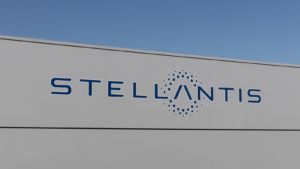That is, top-shelf dividend plays, like the “dividend aristocrats,” are typically not high-yield stocks. A typical dividend yield for a dividend aristocrat is in the 2%-3%. range.
However, through continued dividend growth, plus consistent price appreciation, they can become much more profitable investments over the long-term than many of the stocks sporting much larger yields.
That said, there are some high-yielders (5% or higher) that do have strong appreciation potential. Whether because of macro or company-specific factors, each stock in this category could provide you with the “win/win” scenario of
Alongside the aristocrats, you might add these types of dividend stocks (like the following seven) to your portfolio as well.
B2Gold (BTG)

Based in Vancouver, Canada, B2Gold (NYSEAMERICAN:BTG) calls itself a “senior gold miner,” with established and profitable mines in Mali, Namibia, and the Philippines. The company also holds interests in a variety of other mining companies/projects.
Consistently profitable, B2Gold uses these earnings to support its 4 cent per share quarterly dividend.
On an annualized basis, this dividend gives BTG stock a forward yield of 6.11%. With spot gold prices trending higher in anticipation of Federal Reserve rate cuts, not only does BTG’s high yield appear sustainable.
There may even be room for further dividend increases, not to mention a sound move higher for shares, even if gold only moves moderately higher from here.
Low-cost gold producers like B2Gold have high levels of operating leverage. With operating costs largely-fixed, incremental gains in gold prices can result in outsized increases in profitability.
DHT Holdings (DHT)

Shares in shipping companies, like DHT Holdings (NYSE:DHT) can make for fantastic dividend stocks, but there’s a catch.
The maritime sector is highly cyclical, resulting in a “feast or famine” type of environment where there can be years of high profitability and high dividends, and years of low profitability/losses and low/suspended dividends.
However, right now, market conditions for the shipping space, including the oil tanker segment of the space, stands to stay favorable. The reasons for this are twofold. First, the geopolitical tensions in the Mideast. Second, rising total oil demand. All of this of course is bullish for DHT stock.
Besides enabling this Bermuda-domiciled tanker owner to continue reporting elevated levels of earnings (and hence, maintain its 7.84% dividend), current market conditions are providing the opportunity for DHT to expand its business. The company just announced plans to add four newly-built tankers to its fleet.
Opera (OPRA)

A short while ago, Opera (NASDAQ:OPRA) may have seemed to be a value trap. The Norway-based browser provider traded at a low valuation and sported a high dividend yield, but the perceptions of weaker results pointed to shares continuing to perform poorly.
Flash forward to now. Sentiment has improved for OPRA stock. Shares have surged by around 31.75% over the past month alone.
As InvestorPlace’s Yiannis Zourmpanos discussed earlier this month, the company’s latest fiscal results indicate the company is experiencing a growth resurgence, thanks to its efforts to diversify and further monetize its business.
Yet even as shares have surged in response to strengthening fundamentals, Opera remains cheap. The stock trades for only 16 times forward earnings, making it a bona fide bargain among growing tech companies. In terms of dividends, OPRA remains in high-yield territory, with a forward yield of 5.22%.
Stellantis (STLA)

Over the past year, Stellantis (NYSE:STLA) has been an automotive stock firing on all cylinders. Shares in the Netherlands-domiciled Chrysler, Fiat, and Peugeot parent have surged by nearly 70% during this time frame.
This strong performance as Stellantis has reported that its budding EV manufacturing operations are profitable, in contrast to competitors in Europe and in Detroit, which continue to lose money on their respective vehicle electrification ventures.
That’s not all. Stellantis continues to generate a lot of cash from the production and sale of gas-powered vehicles, enabling the company to continue paying out an annual dividend. This year’s dividend ($1.67 per share), available to anyone buying STLA stock before April 22, gives shares a forward yield of 5.86%.
This high yield, plus the company’s continuously strong operating performances, makes STLA one of the top dividend stocks to buy right now.
Torm (TRMD)

With a trailing twelve month dividend yield of 20.27%, right off the bat you may assume that Torm (NASDAQ:TRMD) is a dividend trap.
After all, the U.K.-based tanker operator’s latest declared quarterly dividend ($1.36 per share) suggests that payouts are going down this year.
However, I wouldn’t assume that there’s a risk of TRMD stock tanking on reduced payouts, outweighing what still stands to be a 15.7% forward dividend yield.
As InvestorPlace Earnings reported on March 15, Torm results for Q4 2023 crushed analyst expectations. The sell-side was expecting earning of $1.74 per share, but actual results came in at $2.11 per share.
Just like DHT, Torm is benefiting from similar tail winds for the tanker industry. As profitability remains high, chances are so too will payouts. Reduced payout uncertainty could lead to a major rerating for shares.
Vector Group (VGR)

Vector Group (NYSE:VGR) has long been one of the popular small-cap dividend stocks among income-focused investors.
Shares should stay popular among dividend fans, given its potential to generate high total returns, from both payouts and price appreciation.
In terms of payouts, VGR stock is a high yielder, with a forward dividend yield of 7.41%. In terms of potential upside, it all has to do with Vector’s unique position in the U.S. cigarette market.
As a Seeking Alpha commentator argued last month, Vector’s Liggett Group subsidiary continues to benefit from an exemption to the Master Settlement Agreement.
This gives Liggett a significant price advantage to its “big tobacco” rivals. Even as U.S. cigarette demand keeps trending lower, Vector could continue to grow market share, earnings, and its dividend.
VICI Properties (VICI)

VICI Properties (NYSE:VICI) first went public in 2017, a real estate investment trust spinoff of Caesars Entertainment (NASDAQ:CZR).
Over the years, the casino REIT has completed several major property acquisitions, namely the merger with MGM Resorts International’s (NYSE:MGM) REIT spinoff, MGM Growth properties.
With this deal, VICI became the largest landlord on the Las Vegas Strip. Given this scale, the REIT is able to operate at maximum efficiency, resulting in strong profitability and high dividends (5.74% forward yield) for VICI stock investors.
VICI has long-term leases in place with its investment-grade tenants, with built-in rent escalations. This will likely enable VICI to continue reporting steady growth in its funds from operations, or FFO (the REIT version of earnings).
Continued FFO growth will probably lead to continued increases to the dividend. In recent years, annual payout increases have been in the 7%-10% range.
On the date of publication, Thomas Niel did not hold (either directly or indirectly) any positions in the securities mentioned in this article. The opinions expressed in this article are those of the writer, subject to the InvestorPlace.com Publishing Guidelines.
Thomas Niel, contributor for InvestorPlace.com, has been writing single-stock analysis for web-based publications since 2016.
